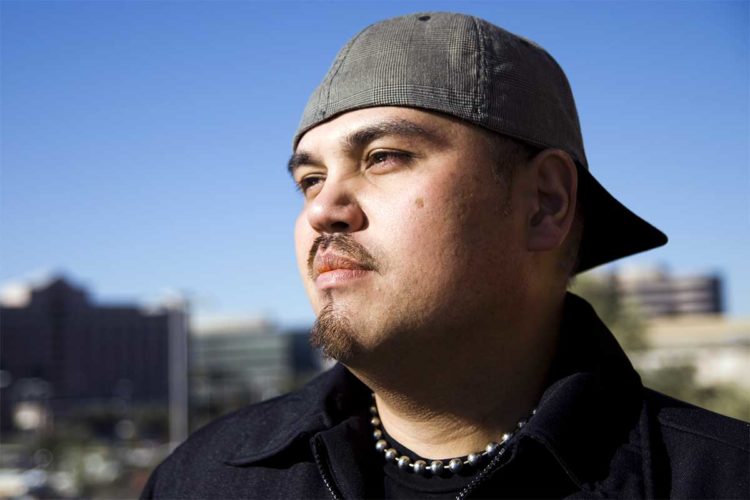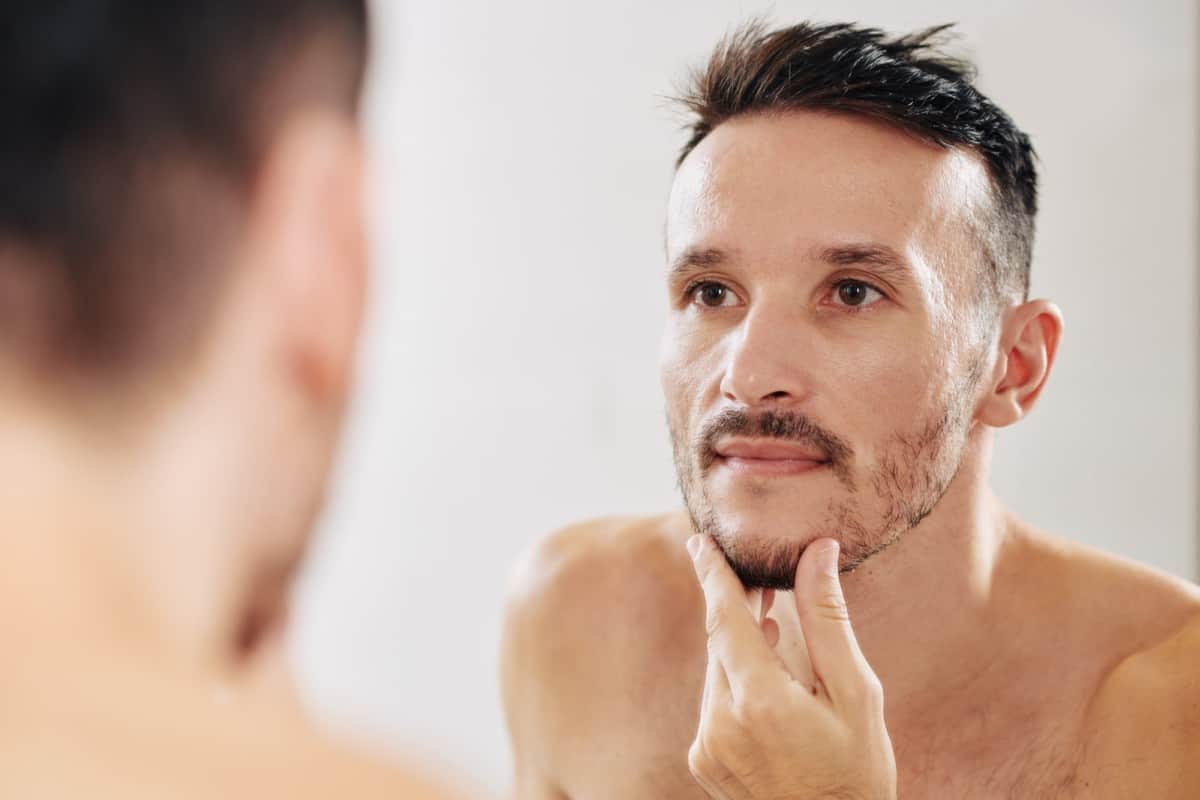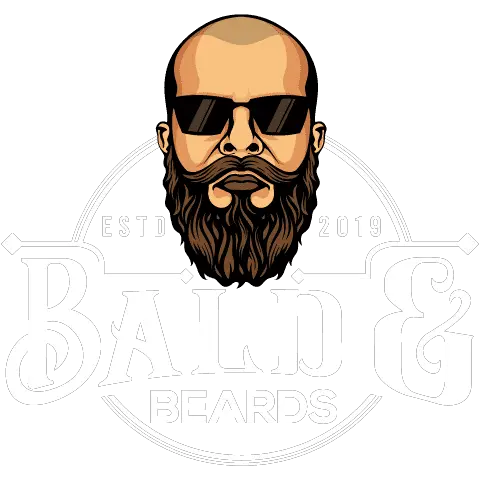A lot of people wonder why some men can’t grow facial hair. The answer is simple: it’s a combination of the country of ancestral origin and genetics.
There are many different ethnicities that don’t typically grow strong facial hair, including Asian, Aboriginal Australian, and Native American.
It turns out that the ability to grow facial hair is determined by a combination of factors, including genetics, hormones, and age. Let’s take a closer look at each of these.
What are the Ethnicities that Cannot Grow Facial Hair?
See a complete list of beard genetics by country.
1. Native American Ethnicity
The Native American ethnicity is a person who identifies with the indigenous people of the Americas. This includes people from North, Central, and South America. The term “Native American” can also include people who are of mixed indigenous and non-indigenous ancestry.
Native Americans have the genetics that enable them to grow facial hair, but their facial hair growth pattern is often patchy scarce. However, not all Native American men have beards. Some choose to shave them for cultural reasons or personal preference.
2. Native Hawaiian / Pacific Ethnicity
Native Hawaiian and Pacific Islanders (NHPIs) are a diverse group of people with origins in the Hawaiian Islands, Guam, Samoa, Tahiti, Fiji, and other Pacific Islands. NHPIs are the fastest-growing racial group in the United States and are a diverse population with a wide range of cultures, languages, and traditions.
Research has shown that Native Hawaiians and Pacific Islanders are less likely to grow facial hair because of their unique genetic composition. Studies have shown that NHPIs have a lower density of facial hair follicles, and this is thought to be because of their ancestors’ migration from Southeast Asia.
So, if you’re of Native Hawaiian or Pacific Islander descent and you can’t grow a beard, don’t worry – it’s not just you!
3. African Ethnicity
The African ethnicity refers to people who are from the African continent. The majority of the African population is made up of Black Africans, but there are also many people of mixed heritage or of other ethnicities, such as Arabs, Berbers, and Asians.
Yes, African men can grow beards and those of African descent are more likely to have thicker facial hair than other ethnicities. So why is it on this list?
First, their skin is very dry, and this makes it hard for the hair to grow lushly. Second, African men also suffer from other skin problems such as acne and blackheads, which further hinders beard growth. Besides that, traditional methods used to remove hair such as geranium oil or castor oil may impede beard growth.
4. European Ethnicity
European ethnicity is a category used in various national censuses for people who have ancestry from Europe. European ancestry can be traced back to the original peoples of Europe, including the Celts, Germans, Greeks, Italians, Slavs, and Spaniards.
It’s widely accepted that hairiness is less attractive by many people, and genetics play a role in how much hair an individual has.
Europeans typically have lower hair density than other ethnicities, which can also mean difficulty growing facial hair even if they wanted to. This lower density of facial hair is not due to ethnicity itself but because the European population generally has fewer hairs than other ethnic groups.
5. Hispanic / Latino Ethnicity
Hispanic or Latino ethnicity refers to people who trace their origins back to countries where Spanish is the predominant language. This can include Mexico, Puerto Rico, Cuba, and other Spanish-speaking countries.
The reason Hispanic/Latino men have a difficult time growing facial hair is due to their genes and beard patterns. On average, they have a lower mFG (maximum Facial Hair Growth) score than other ethnicities, such as Caucasian, Asian, Indian, African American, and Japanese men. Because of this lower score, most Hispanic/Latino men experience difficulty growing full beards and often grow goatees instead.
6. Turkish Ethnicity
It’s not that Turkish men can’t grow beards as it’s important for Muslim men. It’s that mustaches are more prominent with Turkish men.
In fact, Turkish men have a higher rate of facial hair growth than most other ethnicities. This is due to their genes and the climate in Turkey. The climate in Turkey is warm and dry, which promotes facial hair growth.
7. East Asia Ethnicity
East Asia is a region that consists of the countries of China, Japan, North Korea, South Korea, Taiwan and Mongolia. The majority of the people in East Asia are Han Chinese. Other ethnic groups include the Japanese, Koreans, Mongols and Tibetans.
People of East Asia’s ethnicity typically have a lower rate of facial hair growth than other ethnicities due to genetic or lifestyle factors. This is because they have a gene that limits the amount of facial hair they can grow, often resulting in sparse and sporadic, patchy growth.
China, Japan, Philippines and Indonesia are countries with significant populations with low levels of facial hair growth. See our Asian Beard Styles.
8. Japanese Ethnicity
Japanese men can grow beards, but it’s not a familiar sight. In fact, beards are generally seen as unkempt and unmanly, so most Japanese men keep them clean and trimmed.
It’s common the Eastern Asian genetics tend to have weaker facial hair, but Asian men can still grow beards.
9. Philippine Ethnicity
The Philippines is home to numerous ethnic groups, with the majority of Filipinos being of Austronesian descent. The largest and most populous group are the Tagalog people, who make up about 27% of the population. Other notable groups include the Visayans, Bicolano, Ilocano, and Moro.
Members of the Philippine ethnicity have been found to struggle more with growing fuller beards than other ethnic groups. This may be due to genetic factors or cultural norms, though the exact cause is unknown.
10. Chinese Ethnicity
The Chinese ethnic group is the largest in the world, making up around 18% of the global population. The majority of Chinese people live in China, but there are also sizable populations in other countries, such as Taiwan, Singapore, and Malaysia. Chinese culture is rich and varied, with a long history of art, literature, philosophy, and cuisine.
So Chinese men have thin and slow growing facial hair and if that isn’t enough, there are now cultural restrictions on those that can.it’s also believed this limitation is largely the result of centuries-old cultural norms within Chinese society which discourage full beards.
11. Hong Kong Ethnicity
Hong Kong is a special administrative region of China on the southeastern coast of the country. The area has its own legal system, currency, and way of life that are distinct from those in mainland China.
Hong Kong is a culturally diverse city with people from all over the world. The majority of the population is Han Chinese, but there are also significant numbers of other ethnic groups, such as Indian, Pakistani, Bangladeshi and Nepali.
Hong Kong is mentioned as an exception where some people are unable to grow any facial hair at all.
Factors that Affect Facial Hair Growth Around the World?
1. Genetics
Genetics play a large role in facial hair growth. This is evidenced because people whose fathers or grandfathers have beards often have the potential to grow one themselves.
In addition to genes, other factors, such as lineage and region, can also affect beard growth.
2. Age
Age is a factor in the growth of facial hair. As people age, their ability to grow facial hair will increase, and the beard may become thicker. However, some ethnicities are unable to grow facial hair at any age due to genetics.
This includes people of East Asia descent such as Chinese, Japanese or Koreans; Polynesian populations such as Samoans or Tongans and Indigenous Americans, such as Native Americans and Inuit peoples. People belonging to these ethnicities can still opt for a beard transplant if they wish for a more masculine appearance.
3. Low testosterone levels
Low testosterone levels can affect facial hair growth, with some ethnicities disproportionately affected. A person may suffer from symptoms such as irritability, low libido, constant fatigue, erectile dysfunction, difficulty building muscle and increased body fat if they have low testosterone.
Facial hair growth may be reduced or stopped by having low testosterone levels. It’s important to consult a dermatologist to determine the underlying cause of any type of hair loss.
Ethnicities that are more likely to experience poor beard growth due to low testosterone include those from East Asia and Native Americans, among others. Low testosterone can also be linked to genetic factors, such as hormone imbalances in certain individuals.
4. Hormonal imbalances
Hormonal imbalances can have a significant effect on facial hair growth. Low testosterone levels, or hypogonadism, can cause a lack of facial hair growth, as testosterone is an important hormone for promoting facial hair growth.
If testosterone levels are too high, this can stimulate excessive body and facial hair production. Symptoms of high testosterone levels in men include acne production and mood swings. Hormone replacement therapy (HRT) may be used to help raise testosterone levels and improve symptoms of low-T in men.
5. Alopecia Areata
Alopecia areata is an autoimmune condition that can affect hair growth. When affecting facial hair it’s more commonly known as Alopecia Barbae. When a person has alopecia, their body attacks the hair follicles and results in patchy or thin beards, as well as possible hair loss, on other parts of the body.
Treatment options for alopecia areata include minoxidil (Rogaine), dithranol (Dritho-Scalp), corticosteroid creams, topical immunotherapy, steroid injections and oral immunosuppressants. Phototherapy or steroids may also be used to help stimulate facial hair growth in those diagnosed with alopecia areata.
Depending on a person’s genetics and country of origin, some ethnicities may be unable to grow facial hair from this condition or other factors, such as hormones or age-related changes.
6. Ethnicity
Studies have shown that there’s a correlation between ethnicity and the growth of facial hair. People from Mediterranean countries tend to be able to grow thick beards, while Chinese men generally have less facial hair growth than Caucasian men.
It appears that genetics and hormones may play a role in why some ethnicities are more hairy than others, with people who are hairier generally seen as more attractive by the general public.
7. Diet
Eating a healthy diet rich in lean proteins, iron, whole grains and healthy fats can help promote facial hair growth.
Additionally, ensuring an adequate intake of zinc-rich foods has been proven to stimulate the growth of facial hair. Vitamin D, B12 and biotin have also been found to contribute to healthier hair follicles.
8. Stress
Stress can have a negative effect on facial hair growth. It can cause hair loss by releasing hormones that cause hair to fall out, and it can also increase the production of testosterone, leading to an increased growth of facial hair.
Taking time for relaxation is important as well; high levels of cortisol caused by stress can lead to increased hair loss, which impedes beard growth.
To achieve optimal results with a beard transplant or natural facial hair growth, it is important to maintain a healthy lifestyle by eating nutritious foods and avoiding stress.
9. Medications
Medications can influence facial hair growth, and should be discussed with a doctor before taking them. Some medications may have unwanted side effects that can affect facial hair growth.
Hair restoration surgeons typically do not recommend the use of medications to help with facial hair growth, and a plastic surgeon could provide more permanent and effective options such as a beard transplant.
10. Environmental factors
The environment can play a role in facial hair growth by looking at the ancestry and ethnicity of an individual’s parents. Different facial hair patterns can be seen due to ethnicity and mixed race.
However, it’s important to note that genes and ethnicity play a larger role than the environment when it comes to facial hair growth, as they are factors that individuals cannot control.
Differences In Body Hair Types Among Ethnicities
Lipids
The role of lipids in hair types among different ethnicities can be seen in the differences between African Americans and other races. African Americans have rougher facial hair, which is because of their higher lipid content in their skin layer, resulting in stronger and more pronounced hair follicles.
Furthermore, this higher lipid content also leads to a greater prevalence of curly hair among Africans than other ethnicities.
Melanin
Melanin is a pigment found in the hair, skin, and eyes that affects hair type. This pigment varies depending on a person’s ethnicity.
Facial Hair Pattern by Ethnicity
1. Turkish Pattern

The Turkish ethnicity has a distinctive facial hair pattern, which includes a beard from ear to ear with only the lips showing. This beard pattern is common among Turkish men and they are known for having thick mustaches and beards.
2. Native American Pattern

Native Americans may have varying patterns of facial hair growth based on the individual’s ethnic background. Generally, Native American facial hair tends to be patchy due to genetics. However, Native Americans today have a more mixed heritage with those of European descent and may grow thicker facial hair as a result.
4. African American Pattern

There is no standard black beard pattern, as the style can differ depending on a man’s individual facial features and hair texture.
However, some popular variations include goatees, full beards, trims only around the mustache or mouth area, and sideburns that run down the sides of your face.
5. Caucasian Pattern

Caucasians are known for having the most prominent facial hair patterns of any race. Typically, Caucasians have a clean-cut look, and some individuals opt to let their beards grow longer while others prefer to keep them trimmed short.
6. Asian Pattern

East Asians typically have a clean-shaven appearance with little to no facial hair. This is due to their genetics, as East Asians often have less hairy genes, which make it difficult for them to grow beards or mustaches.
7. Hispanic / Latino Pattern

Hispanic and Latino ethnic groups have different facial hair growth patterns. Some individuals may have more facial hair than others due to genetics, while others may prefer to keep less hair on their faces.
For example, some Hispanic men can grow beards, mustaches, or sideburns while others may not be able to grow any of these at all.
8. Native Hawaiian / Pacific Islander Pattern

Native Hawaiians and Pacific islanders typically have a light mustache or clean shave.
Generally, Hawaiian men rarely grow a full beard; often, they may only display a slim little beard along their chin.
Beard Hair Growth Treatments
1. Minoxidil:
Minoxidil is a topical medication that can be used to help stimulate facial hair growth.
2. Testosterone Replacement Therapy:
Can help to increase testosterone levels, which can in turn help to stimulate facial hair growth.
3. Laser Therapy
A non-surgical treatment that uses low-level laser light to stimulate hair follicles and promote facial hair growth.
4. Platelet-Rich Plasma Therapy
PRP treatment uses platelet-rich plasma, taken from the patient’s own blood, to stimulate hair follicles and promote facial hair growth.
5. Beard Transplantation
A facial surgical procedure that can be used to replace lost facial hair with healthy hair follicles.
6. Hair Supplements
Dietary supplements that can help to improve hair health, which can in turn help to promote facial hair growth.
7. Stem Cell Therapy
A treatment that uses stem cells to help stimulate hair follicles and promote facial hair growth.
Conclusion
While there are many different ethnicities that can’t grow facial hair, there are also many that can. If you’re looking for information on which ones are more likely to experience hair loss, this guide has everything you need to know.
From Native Hawaiian / Pacific ethnicity to Hispanic / Latino ethnicity, you’ll find the information you’re looking for here.
FAQ
Why do some races have less facial hair?
Research has found that the ability to grow facial hair is largely determined by genetics. Certain ethnicities, such as Caucasians, Indians, Melanesians and Americans are better at growing facial hair. African people are the only ethnicity known to have curly facial hair growth.
What ethnicities have less facial hair?
Different people of different ethnicities have varying levels of facial hair. However, some research suggests that people of Asian descent tend to have less facial hair than people of other ethnicities.
Which ethnicity has the most facial hair?
Studies suggest that Caucasian men have the most facial hair, followed by African Americans and then Middle Eastern descent over men of other ethnicities. African Americans usually have thick curly facial hair.
Can Natives Grow Beards?
Native Americans, each with their own unique genetic heritage. However, it’s thought that Native Americans are less likely to be able to grow thick facial hair than people of other ethnicities. This is likely due to a combination of genetic factors and environmental factors, such as the climate in which they live.


